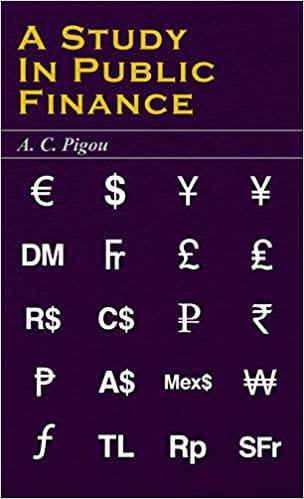Question
24. An individual has determined utilizing the annuity method of capital needs analysis that he needs $1,045,656 at the beginning of his retirement to meet
24. An individual has determined utilizing the annuity method of capital needs analysis that he needs $1,045,656 at the beginning of his retirement to meet his retirement life expectancy goals. If this individual would like to be more conservative in his retirement planning forecast and maintain this capital balance throughout his retirement life expectancy of 32 years, given an expected earnings rate of
6%, and an inflation rate of 3% during the period, how much
more would he need to have at the beginning of his retirement?
(a) $162,032. (b) $406,067. (c) $417,246. (d) $674,023.
25.Jon, age 48, earns $65,000 per year from his employer. Jon saves $15,000 per year for retirement and pays $12,000 per year for his home mortgage. Given this information and considering that Jon will have eliminated his mortgage debt before retirement, what is Jon's expected wage replacement
ratio
during retirement?
(a) 43.16%.
(b) 50.81%.
(c) 58.46%.
(d) 73.89%.
26.Brian would like to retire in 10 years when he turns 62. He wants to have enough money to replace 60% of his current income less what he expects to receive from Social Security at the beginning of each year. He expects to receive $10,000 per year from Social Security in today's dollars. Brian is conservative and wants to assume an 8% annual investment rate of return and that inflation will be 4% per year. Based on his family history, Brian expects that he will live to be 108 years old. If Brian currently earns $150,000 per year and he expects his salary increases to equal the inflation rate, at retirement he will need $2,633,913.14.
(a) True
(b) False
27.Each of the following are requirements qualified tax-advantaged retirement plans
(a) Plan documentation. (b) Employee vesting.
(c) Selective employee participation. (d) Employee communications.
imposed by law on
EXCEPT:
28.Which of the following vesting schedules may a top-heavy defined benefit plan use?
Years of
Service
(A)
(B)
(C)
(D)
A B C D
1 5% 10% 0% 0%
2 10% 20% 0% 0%
3 15% 45% 0% 20%
4 20% 65% 100% 40%
5 60% 100% 100% 60%
6 100% 100% 100% 80%
7 100% 100% 100% 100%
29.For purposes of meeting the coverage requirements of a qualified plan, a defined benefit plan must cover everyone who is 21 years old and has completed one year of service with the plan sponsor.
(a) True
(b) False
30.Jason,age 52, is a highly compensated employee who earns
$300,000 per year and is a participant in his employer's
401(k). His employer also made a 20% profit sharing plan
contribution during the year. Ignoring the ADP test
requirements, what is the maximum amount that Jason can defer under the 401(k) during 2013?
(a ) $0.
(b) $5,500.
(c) $17,500.
(d) $231 000
Step by Step Solution
There are 3 Steps involved in it
Step: 1

Get Instant Access to Expert-Tailored Solutions
See step-by-step solutions with expert insights and AI powered tools for academic success
Step: 2

Step: 3

Ace Your Homework with AI
Get the answers you need in no time with our AI-driven, step-by-step assistance
Get Started


